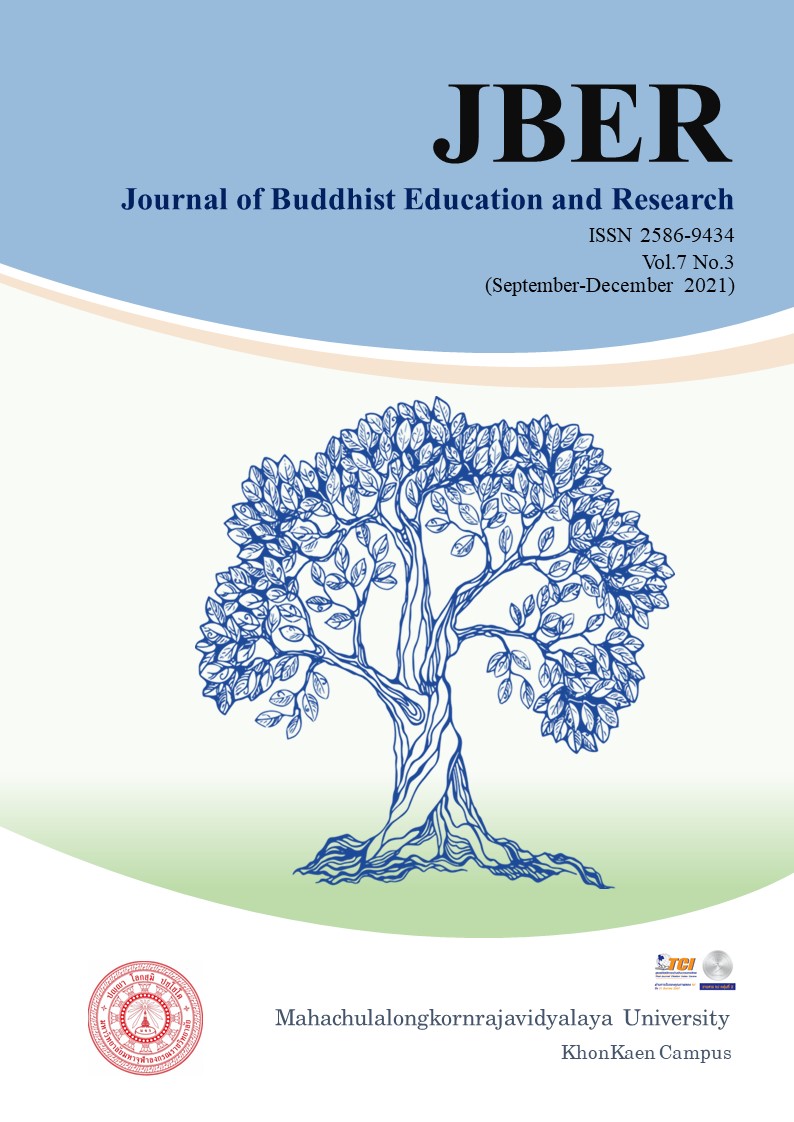PORTFOLIO SETTING OF SECTOR INDICES IN THE STOCK EXCHANGE OF THAILAND
Keywords:
Sector diversification, Markowitz Portfolio Theory, The Stock Exchange of ThailandAbstract
The objective of this study was to examine the risks and returns of the sector indices and the optimal investment weights in accordance with Markowitz Portfolio Theory. Data was collected from The Stock Exchange of Thailand (SET) during the period from 2015 to 2019 when the market was in a sideways trend. The weekly price indices in a total of 27 sectors were used for calculating the returns.
The study found that the optimal portfolio from mean-variance analysis according to Markowitz Portfolio Theory had allocated in 5 sectors including PF&REIT 57.11%, TRANS 22.10%, FIN 15.53%, HELTH 5.14% and PAPER 0.12% with the maximized Sharpe ratio of 1.035 and annual expected return of 9.92%. The sectors which had the greatest and the smallest beta coefficient and required rate of returns were PROF and PF&REIT respectively. When comparing the average of sectors’ realized annual returns with required rates of return, there were only 7 sectors having the positive Jensen’s Alpha which were FIN, PAPER, TRANS, PF&REIT, HELTH, COMM and ENERG.
References
โกเมน จิรัญกุล. (2545). การบริหารความเสี่ยงในพอร์ตการลงทุน. วารสารพัฒนบริหารศาสตร์. 42(ฉบับพิเศษ ครบรอบ 36 ปี สพบ.): 131-168.
เทพชู ศรีโพธิ์, กุณฑลรัตน์ ทวีวงศ์ และ วิษณุ วงศ์สินศิริกุล. (2561). ความเสี่ยงของดัชนีหมวดธุรกิจในช่วงที่มีค่าผลตอบแทนเบี่ยงเบนสูงในตลาดหลักทรัพย์แห่งประเทศไทย. สุทธิปริทัศน์. 32(104): 107.
ปานศรัณย์ บุญนิจรอด. (2559). การกระจายการลงทุนในกลุ่มหลักทรัพย์ระหว่างประเทศอย่างมีประสิทธิภาพ. การค้นคว้าอิสระปริญญามหาบัณฑิต คณะพาณิชยศาสตร์และการบัญชี. มหาวิทยาลัยธรรมศาสตร์.
พัชรินทร์ อุบลบาน. (2559). การศึกษาแนวโน้มดัชนีหลักทรัพย์รายกลุ่มอุตสาหกรรม และดัชนีหลักทรัพย์รายหมวดธุรกิจต่อดัชนีตลาดหลักทรัพย์แห่งประเทศไทย และการกระจายการลงทุนในดัชนีหลักทรัพย์รายกลุ่มอุตสาหกรรม. ปริญญาวิทยาศาสตร์มหาบัณฑิต สาขาวิชาการจัดการ. มหาวิทยาลัยเทคโนโลยีพระจอมเกล้าธนบุรี.
วดาณัฐ วุฒิรัตน์. (2559). ผลตอบแทนการลงทุนในหมวดธุรกิจกลุ่มอุตสาหกรรมอสังหาริมทรัพย์และก่อสร้างของประเทศไทย. การค้นคว้าอิสระปริญญามหาบัณฑิต สาขาวิชาธุรกิจอสังหาริมทรัพย์คณะพาณิชยศาสตร์และการบัญชี. มหาวิทยาลัยธรรมศาสตร์.
Beninga, S. (2008). Financial Modeling. Cambridge, MA: MIT Press.
Campbell, J. Y., Lettau, M., Malkiel, B. G. & Xu, Y. (2001). Have Individual Stocks Become More Volatile? An Empirical Exploration of Idiosyncratic Risk. Journal of Finance. 56 (1): 1-42.
LaBarge, K.P. (2008). Diversification by Country and Global Sector: Considerations for Portfolio Construction. Valley Forge, PA: Investment Counseling & Research. The Vanguard Group.
Markowitz, H.M. (1959). Portfolio Selection: Efficient Diversification of Investments. New York: John Wiley & Sons, Inc.
McIntosh, T.J. (2012). The Sector Strategist: Using New Asset Allocation Techniques to Reduce Risk and Improve Investment Returns. Hoboken, New Jersey: John Wiley & Sons, Inc.
Meric, I., Ratner, M., & Meric, G. (2010). “Risks, Returns, and Portfolio Diversification Benefits of Sector Investments”. Journal of the Northeastern Association of Business, Economics and Technology. 16 (1), 33-44.
Moyer, R. C., McGuigan, J.R. & Rao, R.P. (2018). Contemporary Financial Management 14e. Singapore: Cengage Learning, Inc.
Parkinson, C. S. (2020). Maximizing Returns for Investors Using Modern Portfolio Theory and the Efficient Frontier. Undergraduate Honors Capstone Projects. Utah State University.





